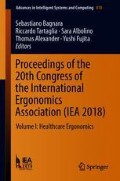Abstract
Background: Ischemic heart disease (IHD) is one of the leading cause of death globally for the past 15 years according to the updated data from World Health Organization in January 2017. Deaths caused by IHD increased by an estimated 41.7% from 1990 to 2013. Therefore, in addition to medical procedure improvement, continuing efforts should be put in the prevention and control of heart disease by actively educating people and promoting self-health management. For patients with coronary artery disease, cardiac rehabilitation may reduce its recurrence and mortality. By practicing the cardiac rehabilitation, the rates of subsequent coronary events would be decreased and the morbidity and the total mortality would be reduced as well. Patient education is also an important part of the cardiac rehabilitation, while its effectiveness through various media may be different. Purpose: To explore and compare the effectiveness of cardiac rehabilitation patient education among three types of media, text only, text and pictures, and video. Methods: This study was divided into two stages. The first stage was the testing of validity of “Cardiac Rehabilitation Awareness Scale (CRAS)” done by five experts. The second stage was the test of the effectiveness of various media by 90 subjects using the CRAS. The subjects were divided into three groups and each group used one type of patient education medium. The subjects carried out the tests according to five different age levels. Results: 1. The validity of “Cardiac Rehabilitation Awareness Scale” was confirmed as a measurement tool of the effectiveness of cardiac rehabilitation patient education. 2. There was no significant difference in the effectiveness of patient education of the three media (P = 0.6001) but “video” received highest subjects preference. Conclusion: It is suggested that currently for clinical application, the “text and pictures” material may be used to educate the IHD patients for its convenience, low cost and preference. With the development of information and communication technology, the “video” may be the better option in the future.
Access this chapter
Tax calculation will be finalised at checkout
Purchases are for personal use only
References
WHO (2017) The top 10 causes of death 2017/01. http://www.who.int/mediacentre/factsheets/fs310/en/
Benjamin EJ et al (2017) Heart disease and stroke statistics-2017 update a report from the American heart association. Circulation 135(10):E146–E603
Mozaffarian D (2016) Heart disease and stroke statistics-2016 update: a report from the american heart association. Circulation 133(15):E599–E599 (vol 133, pg e38)
Rauch B et al (2016) The prognostic effect of cardiac rehabilitation in the era of acute revascularisation and statin therapy: a systematic review and meta-analysis of randomized and non-randomized studies - the cardiac rehabilitation outcome study (CROS). Eur J Prev Cardiol 23(18):1914–1939
Giannuzzi P et al (2003) Secondary prevention through cardiac rehabilitation - position paper of the working group on cardiac rehabilitation and exercise physiology of the european society of cardiology. Eur Heart J 24(13):1273–1278
Boyde M et al (2015) What have our patients learnt after being hospitalised for an acute myocardial infarction? Aust Crit Care 28(3):134–139
Aldcroft SA et al (2011) Psychoeducational rehabilitation for health behavior change in coronary artery disease a systematic review of controlled trials. J Cardiopulm Rehabil Prev 31(5):273–281
Wilson EAH, Wolf MS (2009) Working memory and the design of health materials: a cognitive factors perspective. Patient Educ Couns 74(3):318–322
Education level of the age above 15 years old statistical information network of the Republic of China 2017. http://win.dgbas.gov.tw/dgbas04/bc4/manpower/year/year_t1-t23.asp?table=5&ym=1&yearb=103&yeare=105&out=1
Frieske DA, Park DC (1999) Memory for news in young and old adults. Psychol Aging 14(1):90–98
Harskamp EG, Mayer RE, Suhre C (2007) Does the modality principle for multimedia learning apply to science classrooms? Learn Instr 17(5):465–477
Mayer RE et al (2005) When static media promote active learning: annotated illustrations versus narrated animations in multimedia instruction. J Exp Psychol-Appl 11(4):256–265
Mayer RE (2003) The promise of multimedia learning: using the same instructional design methods across different media. Learn Instr 13(2):125–139
Author information
Authors and Affiliations
Corresponding author
Editor information
Editors and Affiliations
Rights and permissions
Copyright information
© 2019 Springer Nature Switzerland AG
About this paper
Cite this paper
Tseng, CP., Lai, YL., Wang, E. (2019). The Effectiveness of Cardiac Rehabilitation Patient Education Through Various Media. In: Bagnara, S., Tartaglia, R., Albolino, S., Alexander, T., Fujita, Y. (eds) Proceedings of the 20th Congress of the International Ergonomics Association (IEA 2018). IEA 2018. Advances in Intelligent Systems and Computing, vol 818. Springer, Cham. https://doi.org/10.1007/978-3-319-96098-2_73
Download citation
DOI: https://doi.org/10.1007/978-3-319-96098-2_73
Published:
Publisher Name: Springer, Cham
Print ISBN: 978-3-319-96097-5
Online ISBN: 978-3-319-96098-2
eBook Packages: Intelligent Technologies and RoboticsIntelligent Technologies and Robotics (R0)

